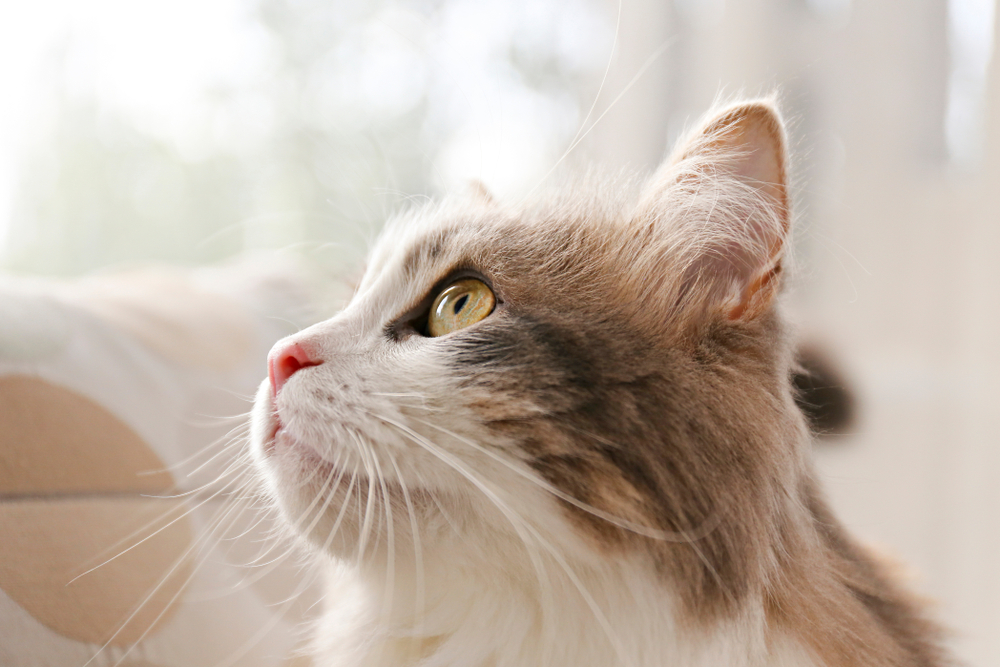
Nystagmus in Dogs and Cats Veterinary Vision Center
Pathological nystagmus can be spontaneous or positional. Spontaneous nystagmus is nystagmus that occurs when the head is not moving and is in the normal position. A unilateral acute peripheral lesion often causes spontaneous nystagmus with horizontal and rotational components. The fast phase is directed away from the side of the lesion.

Nystagmus in Dogs and Cats Veterinary Vision Center
Nystagmus is a disorder that can occur in both dogs and cats. This condition determines the rhythmic and involuntary oscillation of the eyeballs of the feline. This means that the cat's eyes wobble or move back and forth involuntarily. But let's see together what can be the causes of nystagmus in cats.

Nystagmus in Cat YouTube
tilted head in your cat repeatedly falling or leaning to one side issues walking straight abnormal eye movement referred to as nystagmus abnormal eye position referred to as strabismus walking around in circles (less common) nausea and diarrhea independently or together, especially after a seizure (less common)

Nystagmus in Cats Quivering Cat Eyes Unintentional Eye Movement in Cats
Peripheral vestibular system: Circling*, head tilt*, ataxia (usually of all 4 limbs)*, nystagmus* (spontaneous or positional, usually horizontal or rotary with fast phase away from the side of the lesion), strabismus, facial nerve deicits (due to the course of CN through the middle ear), Horner's.

Nystagmus Cat Vestibular Disease YouTube
The technical term for unintentional eye movement in cats is called nystagmus. Nystagmus as a symptom of vestibular syndrome in cats is typically caused by mild trauma to or a disease of the vestibular apparatus, located inside the cat's ear. The vestibular apparatus is responsible for helping cats maintain their balance and coordination.

Nystagmus in Cats Quivering Cat Eyes Unintentional Eye Movement in Cats
Consequently, cats suffering from vestibular disease may develop a head tilt, fall over, and have trouble walking. Oftentimes this unsettling feeling of loss of balance leads to nausea and vomiting. Vestibular disease in cats usually comes on very suddenly and is more common in Siamese and Burmese breeds. While it's most commonly seen in.

Nystagmus in Cats YouTube
Nystagmus is the involuntary, erratic movement of the eyes. Generally caused by conditions affecting the cat's nervous or vestibular (balance) system Nystagmus can be a sign of life-threatening disorders and it is best to seek out veterinary care immediately after it is first observed

Learn all about our experience with Nystagmus in Cats or Quivering Cat
Nystagmus in cats is the involuntary rhythmic movement of the cat's eyeballs. Nystagmus can be a normal reflexive movement, such as eye movement when a cat moves its head side to side ("doll's eye reflex").

(PDF) nystagmus in cats with congenital strabismus
Cats with this syndrome may demonstrate a head tilt, ataxia, truncal deviation, nystagmus and, in some cases, deafness, with clinical signs usually becoming apparent by 3-4 weeks of age. Cases with bilateral disease may show side-to-side head movements and absence of normal physiological nystagmus.

Nystagmus in Cats, What it Looks Like The Crazy Cat Lady Tips
Nystagmus is an involuntary rhythmic oscillation of the eyeball that nearly always affects both eyes equally. Typically, nystagmus consists of a slow phase in one direction and a fast phase in the other.

Feline Nystagmus Causes Symptoms And Treatment CelestialPets
Vestibular disease is when a cat suddenly develops incoordination, falling or circling to one side, involuntary darting of the eyes back and forth (nystagmus), a head tilt, and often nausea or vomiting. These clinical signs usually appear suddenly, often in less than an hour.

Cat with nystagmus YouTube
If so, it's likely that your cat has nystagmus - an abnormal eye movement that could indicate an underlying health issue. Nystagmus is a condition that affects the eyes, causing them to move involuntarily and rapidly. This can lead to vision loss, disorientation, and other health problems in cats. While humans can also experience nystagmus.

Nystagmus in ragdoll cat YouTube
"The nystagmus or rotary movement of the eyes is a normal finding in some breeds of cats. However, these are usually very mild, like what we saw with Trigg. Increased Nystagmus can cause balance problems, and that is when we need to treat it. If Trigg is having trouble with balance or has a permanent tilt of his head, then we should take a look.

Sleeping cat nystagmus YouTube
The most common clinical signs of vestibular disease include circling or falling to one side, a pronounced head tilt, and nystagmus—the rapid and involuntary oscillating movement of the eyeballs.

nystagmus cat YouTube
While nystagmus can be a standalone condition, it is often a symptom of an underlying issue. In cats, nystagmus can be caused by several factors, including vestibular disease, head trauma, infection and inflammation, or genetics. Causes of Nystagmus in Cats Several factors can trigger nystagmus in felines.

Leo pendular nystagmus YouTube
Dogs and cats with peripheral vestibular disease typically display head tilt, spontaneous (resting) nystagmus, strabismus, and ataxia. Falling and rolling may also be observed. Other cranial nerves that can be affected because of their proximity to CN VIII in the petrous temporal bone are CN VII and the sympathetic innervation to the eye (i.e.